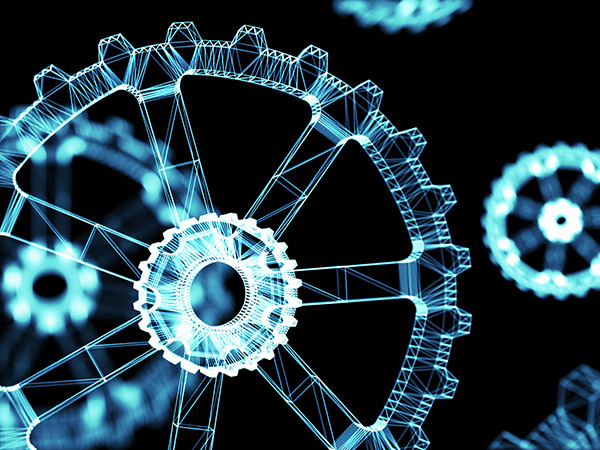Artificial Intelligence
What is Artificial Intelligence?
Artificial intelligence (AI) technologies mirror human intellectual processes via a computer, software, or computer-controlled robot. One example is simulating problem-solving capabilities such as critical thinking.
Together, they perform cognitive functions such as understanding language/context and analyzing and synthesizing multiple streams of information simultaneously. As a result, AI can identify patterns, make assumptions, automate tasks, and create text and images faster and more dexterously than what could be accomplished manually.
Types of Artificial Intelligence
Artificial intelligence generally falls into two categories: traditional AI and generative AI.
Traditional AI
Traditional AI (also known as deterministic AI) applies pre-programmed rules and algorithms to make decisions. It is used in manufacturing, logistics, and other industries where precise calculations and predictions are crucial. Traditional AI systems excel at solving well-defined problems and performing repetitive tasks.
Generative AI
Generative AI (also known as Gen AI) algorithms analyze large data sets to learn patterns and generate new content. Gen AI models can create software code, images, text, and other unique outputs that mimic human creativity.
ChatGPT is a well-known example of Gen AI. It is a large language model (LMM) type of AI that uses machine and deep learning for image and speech recognition, object detection, and natural language processing. Gen AI technologies are also using retrieval-augmented generation (RAG) to expand their knowledge base beyond LMMs to increase the timeliness and accuracy of their outputs/responses.
To gain a deeper understanding of Traditional, Generative, and other types of AI, read our blog, “How to Future-Proof Your AI Manufacturing Initiatives with Data”.
The Benefits of Artificial Intelligence & How aPriori Leverages AI
Artificial Intelligence (AI) provides some key advantages for manufacturers. Here are some and how aPriori leverages them:
- Increased Operational Efficiencies: AI can automate repetitive tasks, allowing humans to focus on more complex and innovative activities. As a result, productivity increases, and less manual labor is required for more rudimentary tasks. An added bonus is that it can compensate for labor shortages as was the case for one aPriori customer.
- Informed, Faster Decision-Making: AI can analyze large amounts of data quickly and accurately, providing critical insights to inform decision-making. For instance, aPriori’s AI-driven sourcing insights improve both decision-making and cost savings.
- Enhanced Product Development: AI can identify design and manufacturability flaws early in product development, reducing late-stage iterations and engineering change orders (ECOs). aPriori applies traditional AI capabilities, automatically evaluating a 3D CAD model’s geometry. It recommends the most optimal, cost-effective routing steps (manufacturing processes, material selection, factory, geographical region) for design for manufacturing (DFM), cost, and carbon.
- Reduction of Costs: Automating tasks and streamlining operations via AI helps reduce overall costs. aPriori’s AI-powered design and sourcing insights enable manufacturers to quickly and accurately identify manufacturability issues and cost outliers in the early stages of product development, saving time and money.
- Better Supply Chain Management: AI can help accelerate sourcing, reduce risks, and provide real-time insights for data-driven decision-making. For instance, aPriori’s AI-powered sourcing insights enable sourcing teams to compare supplier capabilities, materials, and pricing in 87 global regions with speed and accuracy through its Regional Data Libraries.
- More Innovation: AI enables faster and better innovation, accelerating research and development by analyzing complex data sets and identifying patterns that humans might miss. To further maximize the power of aPriori’s traditional AI capabilities, customers are leveraging them with their own generative AI and machine learning projects.
Can You Quickly Spot Critical Cost or Performance Outliers?
Discover how AI-powered insights save time and optimize cost, design and sustainability.

